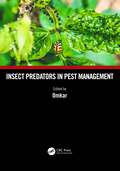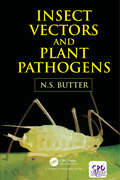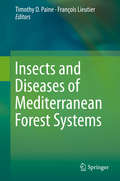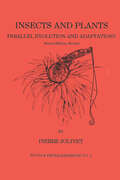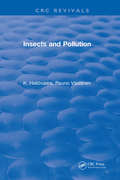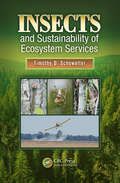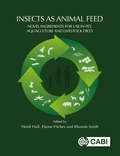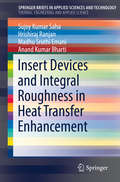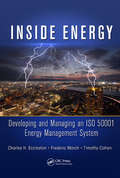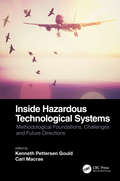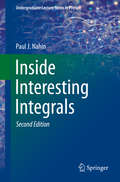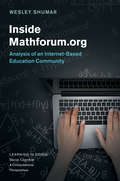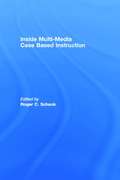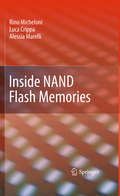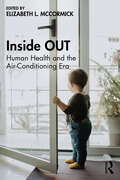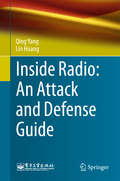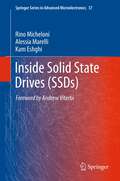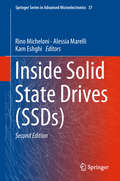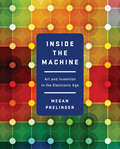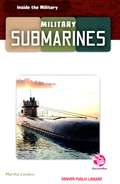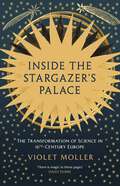- Table View
- List View
Insect Predators in Pest Management
by OmkarPests cause damage to the economic value of crops and stored products, while vectors are responsible for the transmission of disease-causing agents in human beings and livestock. Although application of synthetic pesticides in agriculture gives immediate relief, it also causes well-known side effects, leading to a consensus among entomologists and agriculturists to shift towards other ecofriendly pest management methods. Natural enemies of insects including their predators, parasitoids and pathogens have attracted the attention of scientists across the globe. These natural enemies exist in agroecosystems and suppress the populations of pests. Parasitoids are farmers’ friends and the most successful group of natural enemies. Highly specialized/generalized in their prey choice, active stages of predators search for a suitable prey, attack or kill the prey and consume prey within a short handling time. Predatory ability is known to increase with increase in prey density. A single predator may devour several prey individuals. Exploiting this potency of parasitoids may yield successful results in controlling notorious pests in an ecofriendly way. This book provides information on the important biocontrol agents that are effective in pest suppression. It starts with insect parasitic groups followed by specific group of parasitoids. It is hoped that the book presents a comprehensive account of beneficial parasitoids and will be useful to undergraduate and postgraduate students of Entomology, Biological Control, Plant Protection, Agricultural Zoology and Zoology, besides those involved in competitive examinations and policy planning. Features Each chapter has been authored by specialized senior professionals. Every chapter contains Learning Objectives and Points to Remember. This book offers comprehensive knowledge of parasitoids and their application in pest management in a lucid way.
Insect Vectors and Plant Pathogens
by Nachhattar Singh ButterThe history of pathogens and vectors, unique symptoms of diseases and economic importance of important viral diseases have been dealt with in the introductory chapter of this book. While highlighting the role of arthropods, nematodes, and fungi; other agents of the spread of plant pathogens have also been included. Important aspects of insect vectors with direct bearing on transmission, i.e. vector identification, biology, feeding apparatus, and mechanism of spread including control of pathogens through vectors are covered comprehensively. As aphids and other hemipterous insects are major insect vectors, the book stresses on this order. There is a focus on the transmission of determinants under different categories of the transmission mechanism. The transmission determinant paradigm comprising coat protein and helper component has been expounded with recent cases. A brief description of new diseases at least one from each genus of plant viruses has been included in this compendium to elucidate the interaction of vector and virus. Phytoplasmal etiology of pathogens has been detailed separately on account of their importance. The transmission of plant viruses through insects with biting and chewing type of mouth parts has been discussed in detail as separate chapter. The latest research in the field of mites, nematodes, and fungi as vectors of plant viruses has been included. How the phytotoxemia is different from other crop disorders, has been critically explained with support from suitable and common examples of crop disorders. The book also highlights the effects of plant viruses on their vectors. An account of classification of plant viruses has also been given for better understanding of subject matter. Likewise, the information on the electron microscope along with its use has been included so as to define the procedure of examining sub-microscopic entities. The latest developments in the management of plant pathogens through vector management have been discussed with special reference to the use of biotechnology, crop protection, and plant resistance. <P><P>The book will be of value to the teachers and to researchers. It will also be useful for extension workers in managing crop disorders. Students and researchers of entomology, plant pathology, plant protection and virology disciplines will obtain the latest in the field, through this book.
Insect and Hydroponic Farming in Africa: The New Circular Food Economy (Agriculture and Food Series)
by Dorte Verner Afton Halloran Nanna Roos Surabian Maximillian Ashwill Saleema Vellani Yasuo KonishiInterestingly, some relief from today's woes may come from ancient human practices. While current agri-food production models rely on abundant supplies of water, energy, and arable land and generate significant greenhouse gas emissions in addition to forest and biodiversity loss, past practices point toward more affordable and sustainable paths. Different forms of insect farming and soilless crop farming, or hydroponics, have existed for centuries. In this report the authors make a persuasive case that frontier agriculture, particularly insect and hydroponic farming, can complement conventional agriculture. Both technologies reuse society's agricultural and organic industrial waste to produce nutritious food and animal feed without continuing to deplete the planet's land and water resources, thereby converting the world's wasteful linear food economy into a sustainable, circular food economy. As the report shows, insect and hydroponic farming can create jobs, diversify livelihoods, improve nutrition, and provide many other benefits in African and fragile, conflict-affected countries. Together with other investments in climate-smart agriculture, such as trees on farms, alternate wetting and drying rice systems, conservation agriculture, and sustainable livestock, these technologies are part of a promising menu of solutions that can help countries move their land, food, water, and agriculture systems toward greater sustainability and reduced emissions. This is a key consideration as the World Bank renews its commitment to support countries' climate action plans. This book is the Bank's first attempt to look at insect and hydroponic farming as possible solutions to the world's climate and food and nutrition security crisis and may represent a new chapter in the Bank's evolving efforts to help feed and sustain the planet.
Insects and Diseases of Mediterranean Forest Systems
by Timothy D. Paine François LieutierInsect and disease issues are often specific to the Mediterranean forest systems rather than shared with the temperate forests. In addition to the specific native insects and diseases, the forests are subject to the invasion of exotic species. The forests are also at risk from high degrees of human activity, including changing patterns of forest fires, land management activities, intensive plantation forestry using introduced timber species from other Mediterranean climate zones, and atmospheric deposition. Combined with elements of global climate change that may disproportionately affect Mediterranean climate systems, this creates a number of significant management issues that are unique to the Mediterranean forests. It is our goal that the information contained in this volume will contribute to understanding the unique aspects of Mediterranean forest systems and to protecting these critical resources.
Insects and Plants: Parallel Evolution & Adaptations, Second Edition
by Pierre JolivetInsects and plants, whether or not they coevolved, have intimate interrelationships. This book concisely yet thoroughly describes these phenomena. In one chapter the salient facts known about carnivorous plants are described. In another, ant and plant relationships are summarized as an introduction to this vast subject. Pollination, of great interest to agriculturists and horticulturists, is briefly explained without the complexities detailed in the massive literature on this topic. Many other subjects are discussed, such as the memory of adult butterflies, which enables them to return to their host plants in the case of the polyphagous species. The book is seeded with such thought-provoking discussions as prostitution among the orchids and botanical indigestion in some plants.
Insects and Pollution
by K. HeliovaaraInsects and Pollution provides a comprehensive overview of both the direct and indirect effects of pollution on insects and discusses the ecological and economic consequences of these changes. The book reviews studies on pollutant-induced changes in insects classified according to their trophic position, taxonomy, and developmental stage. These changes are considered on different spatial and temporal scales, in different climatic and vegetation zones, and in different habitats (with emphasis on coniferous forests). The book also describes the effects of a variety of pollutants on terrestrial and aquatic ecosystems. Other topics considered include the effects of pollutants on insect physiology, ecology and evolution, and updating and synthesizing data. Insects and Pollution is the first book to combine entomological and ecotoxicological perspectives to address the far-ranging effects of pollution on insects. It is essential reading for entomologists, ecotoxicologists, conservation biologists, and other professionals in the environmental sciences.
Insects and Sustainability of Ecosystem Services (Social Environmental Sustainability)
by Timothy D. SchowalterWith few exceptions, insects are perceived in industrialized countries as undesirable pests. In reality, relatively few insects interfere with us or our resources. Most have benign or positive effects on ecosystem services, and many represent useful resources in non-industrialized countries. Challenging traditional perceptions of the value of insec
Insects as Animal Feed: Novel Ingredients for Use in Pet, Aquaculture and Livestock Diets
by David Drew William Clark Amanda Beard Andrew Salter Michael Dickinson Marc Kenis Hanna Bjone Angela Booth John Brameld Syrine Chaalala Faki Chabi Olivia Champion Chistophe Chrysostome Victor Clottey Kalifa Coulibaly Emilie Devic Virginia Emery Norbert Erokotan Thomas Farrugia Mark Finke Mohamed Gastli Adin Y. Bloukounon-Goubalan Kerensa Hawkey Antoine Hubert Gabriel Koko Liz Koutsos Lars-Henrik Lau Heckmann Sean Mason Helen Massey O'Neill James McCulloch Daniel Murta Judith Nelson Emmanuel Nkegbe Noel Obognon Dennis Oonincx Tim Parr Rajmond Percze Sètchémè Pomalégni Liz Quigley Santos Rojo Birgit Rumpold Aliou Saïdou Istvan Sandor Fernand Sankara Katharina Unger Maureen Wakefield Luke Wheat Keiran WhitakerThe global drive towards sustainability and improved animal health means there is a greater need for development of novel functional ingredients for the feed industry. As the requirements for protein for livestock feed and human consumption grows, the use of insect products as animal feed has gained increasing attention. Covering global production systems of insect protein, oil and chitin, as well as co-products from this industry, this book: - Considers in-depth nutritional and safety aspects of insects for feed. - Reviews suitability of insects as feed for different animal species and life stages. - Examines current knowledge of the value of insect-rearing residues as biofertilizers for crop health. - Identifies the challenges related to regulation, legislation, consumer perception and acceptance, and commercialization of insects. - Provides interviews with established and early-stage innovative companies producing insect protein for feed. Including a focus on practices such as waste valorization, this book takes a holistic look at how insects could contribute to the sustainability of livestock production on a global scale. Providing an up-to-date reference for research scientists, nutritionists, and veterinarians, as well as prospective insect farmers, it will also be of interest to those with a broader curiosity towards climate change, sustainability, and the circular economy.
Insert Devices and Integral Roughness in Heat Transfer Enhancement (SpringerBriefs in Applied Sciences and Technology)
by Sujoy Kumar Saha Hrishiraj Ranjan Madhu Sruthi Emani Anand Kumar BhartiThis Brief describes heat transfer and pressure drop in heat transfer enhancement by insert devices and integral roughness. The authors deal with twisted-tape insert laminar and turbulent flow in tubes and annuli in smooth tubes and rough tubes, segmented twisted-tape inserts, displaced enhancement devices, wire coil inserts, extended surface inserts and tangential injection devices. The articles also address transverse and helical integral rib roughness, corrugated tube roughness, 3D and 2D roughness, rod bundles, outside roughness for cross flow, non-circular channels, Reynolds analogy and similarity law, numerical simulation and predictive models. The book is ideal for professionals and researchers working with thermal management in devices.
Inside Biosphere 2: Earth Science Under Glass (Scientists in the Field Series)
by Mary Kay Carson Tom UhlmanIn the Arizona desert, scientists conduct studies and experiments aimed to help us better understand our environment and what sort of things are happening to it due to climate change. The location is Biosphere 2, an immense structure that contains a replica ocean, savannah, and rainforest, among other Earth biomes. It's a unique take on the Scientists in the Field mission statement -- in this case, the lab is a replica that allows the scientists to conduct large-scale experiments that would otherwise be impossible.
Inside Cyber Warfare: Mapping the Cyber Underworld (Oreilly And Associate Ser.)
by Jeffrey CarrWhat people are saying about Inside Cyber Warfare"The necessary handbook for the 21st century."--Lewis Shepherd, Chief Tech Officer and Senior Fellow, Microsoft Institute for Advanced Technology in Governments"A must-read for policy makers and leaders who need to understand the big-picture landscape of cyber war."--Jim Stogdill, CTO, Mission Services AccentureYou may have heard about "cyber warfare" in the news, but do you really know what it is? This book provides fascinating and disturbing details on how nations, groups, and individuals throughout the world are using the Internet as an attack platform to gain military, political, and economic advantages over their adversaries. You'll learn how sophisticated hackers working on behalf of states or organized crime patiently play a high-stakes game that could target anyone, regardless of affiliation or nationality.Inside Cyber Warfare goes beyond the headlines of attention-grabbing DDoS attacks and takes a deep look inside multiple cyber-conflicts that occurred from 2002 through summer 2009.Learn how cyber attacks are waged in open conflicts, including recent hostilities between Russia and Georgia, and Israel and PalestineDiscover why Twitter, Facebook, LiveJournal, Vkontakte, and other sites on the social web are mined by the intelligence services of many nationsRead about China's commitment to penetrate the networks of its technologically superior adversaries as a matter of national survivalFind out why many attacks originate from servers in the United States, and who's responsibleLearn how hackers are "weaponizing" malware to attack vulnerabilities at the application level
Inside Energy: Developing and Managing an ISO 50001 Energy Management System
by Charles H. Eccleston Frederic March Timothy CohenInformed by the authors' extensive experience in helping organizations improve the performance of their management systems, Inside Energy: Developing and Managing an ISO 50001 Energy Management System covers how to apply each of the many requirements of the standard in a systematic and comprehensive manner. It discusses how converting an existing s
Inside Hazardous Technological Systems: Methodological foundations, challenges and future directions
by Kenneth Pettersen Gould and Carl MacraeThis book explores the challenges, opportunities, applications, and implications of applying qualitative research to critical questions of research and practice in the field of organizational risk and safety. The book brings together a diverse perspective to explore the practice of conducting qualitative research as well as to debate the quality of research and knowledge, drawing on a range of different perspectives and traditions. It offers novel and innovative developments in data collection and data analysis methods and tools that can be applied to safety, risk, and accident analysis in complex systems. It also will present practical issues associated with data access and empirical research in challenging and high-stakes environments. This book will provide academics, researchers, students, and professionals in the fields of safety, accident analysis, and risk with a broad-range and expert guide to the key issues and debates in the field, as well as a set of exemplary cases and reflective narratives from leading researchers in the field.
Inside Interesting Integrals: A Collection of Sneaky Tricks, Sly Substitutions, and Numerous Other Stupendously Clever, Awesomely Wicked, and Devilishly Seductive Maneuvers for Computing Hundreds of Perplexing Definite Integrals From Physics, Engineering, and Mathematics (Plus Numerous Challenge Problems with Complete, Detailed Solutions) (Undergraduate Lecture Notes in Physics)
by Paul J. NahinWhat’s the point of calculating definite integrals since you can’t possibly do them all?What makes doing the specific integrals in this book of value aren’t the specific answers we’ll obtain, but rather the methods we’ll use in obtaining those answers; methods you can use for evaluating the integrals you will encounter in the future.This book, now in its second edition, is written in a light-hearted manner for students who have completed the first year of college or high school AP calculus and have just a bit of exposure to the concept of a differential equation. Every result is fully derived. If you are fascinated by definite integrals, then this is a book for you. New material in the second edition includes 25 new challenge problems and solutions, 25 new worked examples, simplified derivations, and additional historical discussion.
Inside Mathforum.org: Analysis of an Internet-Based Education Community (Learning in Doing: Social, Cognitive and Computational Perspectives)
by Wesley ShumarThe internet has dramatically transformed social space and time for many people in many different contexts. This dramatic warping of the social fabric has happened slowly over time as digital technologies have evolved and internet speeds have increased. While we are all aware of these changes, the impact is often little understood. There are few monographs about social groups made possible by the internet, and even fewer about educational communities made possible through digital technologies. Inside Mathforum. org details the ways that digital media are used to enhance the practices that teachers and students of mathematics engage in. The book also shows how different kinds of mathematical conversations and interactions become possible through the digital media. Unlike many other educational uses of digital media, the Math Forum's community has provided online resources and sustained support for teachers and students, and it leads the way in showing the power of digital media for education.
Inside Multi-Media Case Based Instruction
by Roger C. SchankThe fourth in the Inside series, this volume includes four theses completed under the editor's direction at the Institute for the Learning Sciences at Northwestern University. This series bridges the gap between Schank's books introducing (for a popular audience) the theories behind his work in artificial intelligence (AI) and the many articles and books written by Schank and other AI researchers for their colleagues and students. The series will be of interest to graduate students in AI and professionals in other academic fields who seek the retraining necessary to join the AI effort or to understand it at the professional level. This volume elaborates the Case-Based Teaching Architecture. A central tenet of this architecture is the importance of acquiring cases, and being able to retrieve and use those cases to solve new problems. The theses address the problems of building case bases, indexing large amounts of data contained within those case bases, and retrieving information on a need-to-know basis. They also reflect the work of researchers at the Institute to design tools that enable software programs to be built more effectively and efficiently.
Inside NAND Flash Memories
by Alessia Marelli Rino Micheloni Luca CrippaDigital photography, MP3, digital video, etc. make extensive use of NAND-based Flash cards as storage media. To realize how much NAND Flash memories pervade every aspect of our life, just imagine how our recent habits would change if the NAND memories suddenly disappeared. To take a picture it would be necessary to find a film (as well as a traditional camera...), disks or even magnetic tapes would be used to record a video or to listen a song, and a cellular phone would return to be a simple mean of communication rather than a multimedia console. The development of NAND Flash memories will not be set down on the mere evolution of personal entertainment systems since a new killer application can trigger a further success: the replacement of Hard Disk Drives (HDDs) with Solid State Drives (SSDs). SSD is made up by a microcontroller and several NANDs. As NAND is the technology driver for IC circuits, Flash designers and technologists have to deal with a lot of challenges. Therefore, SSD (system) developers must understand Flash technology in order to exploit its benefits and countermeasure its weaknesses. Inside NAND Flash Memories is a comprehensive guide of the NAND world: from circuits design (analog and digital) to Flash reliability (including radiation effects), from testing issues to high-performance (DDR) interface, from error correction codes to NAND applications like Flash cards and SSDs.
Inside OUT: Human Health and the Air-Conditioning Era
by Elizabeth L. McCormickInside OUT: Human Health and the Air-Conditioning Era focuses on the enclosed environment of fully conditioned buildings, revealing a unique ecosystem with broad implications for human life and a rapidly expanding global footprint. Emphasizing the interconnections between buildings and human health, equity, and environmental sustainability, it presents an interdisciplinary, holistic analysis of the social, behavioral, and technological issues of indoor space.Over the 20th century, advances in mechanical conditioning technologies led to the dispersion and international dominance of the sealed building envelope, which casually and progressively disconnected buildings and their occupants from local climatic, biological, and cultural environments. At the same time, humans were increasingly pushed indoors by less tangible, socially constructed forces that associated climate control with cleanliness, health, social status, and modernization.In this volume, a multi-disciplinary group of experts on the indoor microbiome from the fields of biology, anthropology, and architecture come together to thoughtfully reflect on the history, properties, and meaning of indoor air quality in buildings, and to discuss the future of human habitation – with a dominant focus on human health in a post-pandemic world. Taking a human-first approach to health and sustainability, the authors weave together a compelling analysis of social and technological drivers of conditioned space with arguments for future interventions in the built environment.Amid growing awareness of air quality and climate concerns, Inside OUT provides a timely discussion of the relationship between building design and human health, of relevance to professional and academic readers from across the spectrum of the building industry, as well as fields including public health and environmental studies.
Inside Radio: An Attack and Defense Guide
by Qing Yang Lin HuangThis book discusses the security issues in a wide range of wireless devices and systems, such as RFID, Bluetooth, ZigBee, GSM, LTE, and GPS. It collects the findings of recent research by the UnicornTeam at 360 Technology, and reviews the state-of-the-art literature on wireless security. The book also offers detailed case studies and theoretical treatments – specifically it lists numerous laboratory procedures, results, plots, commands and screenshots from real-world experiments. It is a valuable reference guide for practitioners and researchers who want to learn more about the advanced research findings and use the off-the-shelf tools to explore the wireless world.
Inside Solid State Drives (SSDs)
by Alessia Marelli Kam Eshghi Rino MicheloniSolid State Drives (SSDs) are gaining momentum in enterprise and client applications, replacing Hard Disk Drives (HDDs) by offering higher performance and lower power. In the enterprise, developers of data center server and storage systems have seen CPU performance growing exponentially for the past two decades, while HDD performance has improved linearly for the same period. Additionally, multi-core CPU designs and virtualization have increased randomness of storage I/Os. These trends have shifted performance bottlenecks to enterprise storage systems. Business critical applications such as online transaction processing, financial data processing and database mining are increasingly limited by storage performance. In client applications, small mobile platforms are leaving little room for batteries while demanding long life out of them. Therefore, reducing both idle and active power consumption has become critical. Additionally, client storage systems are in need of significant performance improvement as well as supporting small robust form factors. Ultimately, client systems are optimizing for best performance/power ratio as well as performance/cost ratio. SSDs promise to address both enterprise and client storage requirements by drastically improving performance while at the same time reducing power. Inside Solid State Drives walks the reader through all the main topics related to SSDs: from NAND Flash to memory controller (hardware and software), from I/O interfaces (PCIe/SAS/SATA) to reliability, from error correction codes (BCH and LDPC) to encryption, from Flash signal processing to hybrid storage. We hope you enjoy this tour inside Solid State Drives.
Inside Solid State Drives (Springer Series in Advanced Microelectronics #37)
by Alessia Marelli Kam Eshghi Rino MicheloniThe revised second edition of this respected text provides a state-of-the-art overview of the main topics relating to solid state drives (SSDs), covering NAND flash memories, memory controllers (including booth hardware and software), I/O interfaces (PCIe/SAS/SATA), reliability, error correction codes (BCH and LDPC), encryption, flash signal processing and hybrid storage.Updated throughout to include all recent work in the field, significant changes for the new edition include:A new chapter on flash memory errors and data recovery procedures in SSDs for reliability and lifetime improvementUpdated coverage of SSD Architecture and PCI Express Interfaces moving from PCIe Gen3 to PCIe Gen4 and including a section on NVMe over fabric (NVMf)An additional section on 3D flash memoriesAn update on standard reliability procedures for SSDsExpanded coverage of BCH for SSDs, with a specific section on detectionA new section on non-binary Low-Density Parity-Check (LDPC) codes, the most recent advancement in the fieldA description of randomization in the protection of SSD data against attacks, particularly relevant to 3D architecturesThe SSD market is booming, with many industries placing a huge effort in this space, spending billions of dollars in R&D and product development. Moreover, flash manufacturers are now moving to 3D architectures, thus enabling an even higher level of storage capacity. This book takes the reader through the fundamentals and brings them up to speed with the most recent developments in the field, and is suitable for advanced students, researchers and engineers alike.
Inside the Machine: Art and Invention in the Electronic Age
by Megan PrelingerA visual history of the electronic age captures the collision of technology and art--and our collective visions of the future. A hidden history of the twentieth century's brilliant innovations--as seen through art and images of electronics that fed the dreams of millions. A rich historical account of electronic technology in the twentieth century, Inside the Machine journeys from the very origins of electronics, vacuum tubes, through the invention of cathode-ray tubes and transistors to the bold frontier of digital computing in the 1960s. But, as cultural historian Megan Prelinger explores here, the history of electronics in the twentieth century is not only a history of scientific discoveries carried out in laboratories across America. It is also a story shaped by a generation of artists, designers, and creative thinkers who gave imaginative form to the most elusive matter of all: electrons and their revolutionary powers. As inventors learned to channel the flow of electrons, starting revolutions in automation, bionics, and cybernetics, generations of commercial artists moved through the traditions of Futurism, Bauhaus, modernism, and conceptual art, finding ways to link art and technology as never before. A visual tour of this dynamic era, Inside the Machine traces advances and practical revolutions in automation, bionics, computer language, and even cybernetics. Nestled alongside are surprising glimpses into the inner workings of corporations that shaped the modern world: AT&T, General Electric, Lockheed Martin. While electronics may have indelibly changed our age, Inside the Machine reveals a little-known explosion of creativity in the history of electronics and the minds behind it.
Inside the Military Submarines (Inside the Military)
by Martha LondonThis title provides readers with a fascinating look at the mighty military submarines. Vivid photographs and easy-to-read text aid comprehension for readers as they go under water to explore the military's sneaky ships. Features include a table of contents, two infographics, fun facts, a sidebar, Making Connections questions, a glossary, and an index. QR Codes in the book give readers access to book-specific resources to further their learning. Aligned to Common Core Standards and correlated to state standards. DiscoverRoo is an imprint of Pop!, a division of ABDO.
Inside the Stargazer's Palace: The Transformation of Science in 16th-Century Europe
by Violet MollerEnter the mysterious world of sixteenth-century science, where astronomers and alchemists shared laboratories.In 1543, Nicolaus Copernicus declared the earth revolved around the Sun, overturning centuries of scholastic presumption. A new age was coming into view – one guided by observation, technology and logic. But omens and elixirs did not disappear from the sixteenth-century laboratory. Charms and potions could still be found nestled between glistening brass instruments and leather-bound tomes. The line between the natural and supernatural remained porous, yet to be defined. From the icy Danish observatory of Tycho Brahe, to the smoky, sulphur-stained workshop of John Dee, Violet Moller tours the intellectual heart of early European science. Exploring its rich, multidisciplinary culture, Inside the Stargazer&’s Palace reveals a dazzling forgotten world, where all knowledge, no matter how arcane, could be pursued in good faith.
Inside the World of Medical Robots (Fountas & Pinnell Classroom, Guided Reading Grade 4)
by Laura JohnsonNIMAC-sourced textbook
